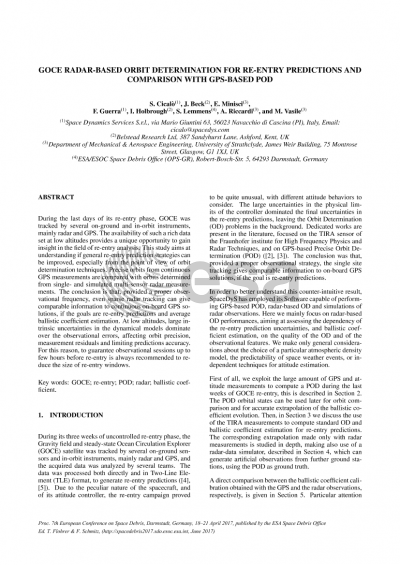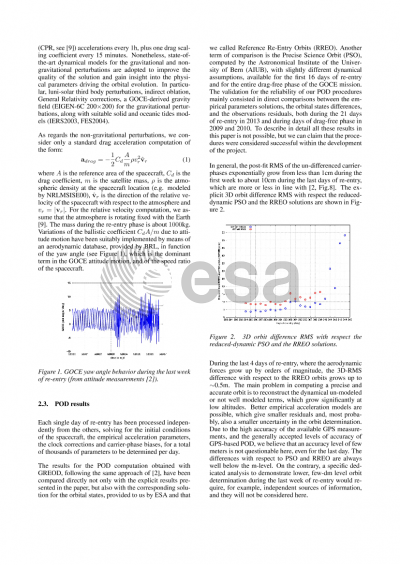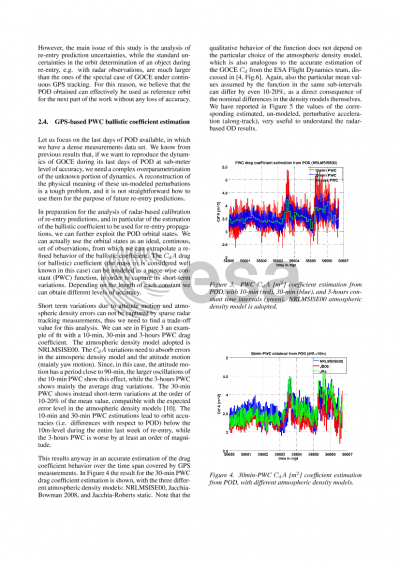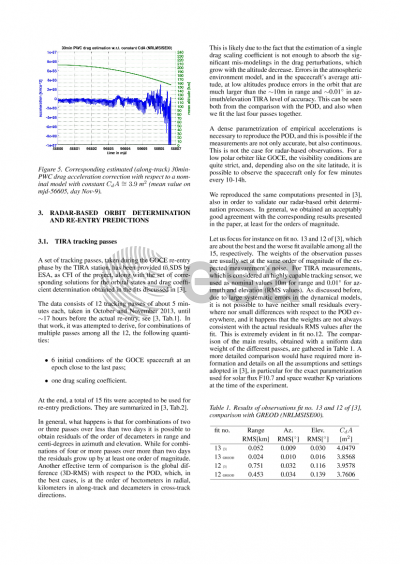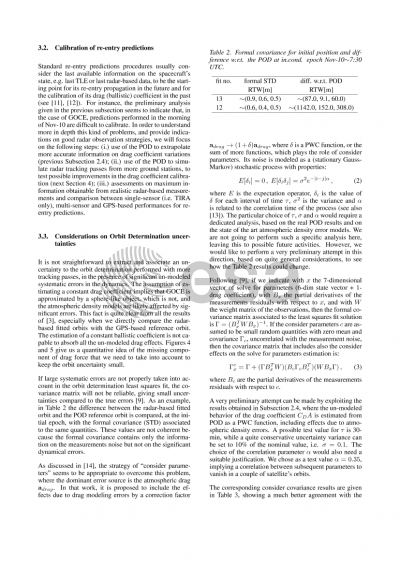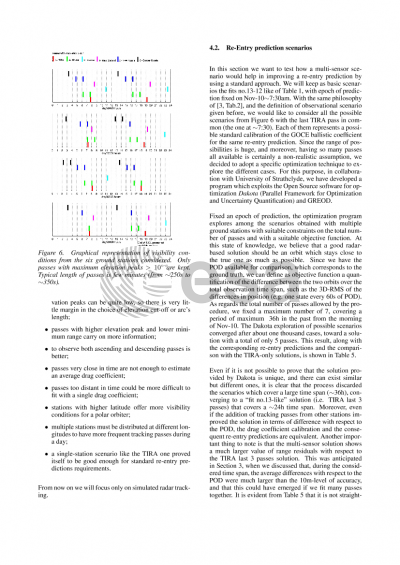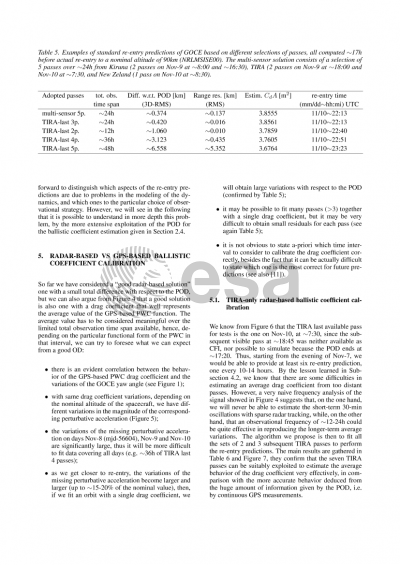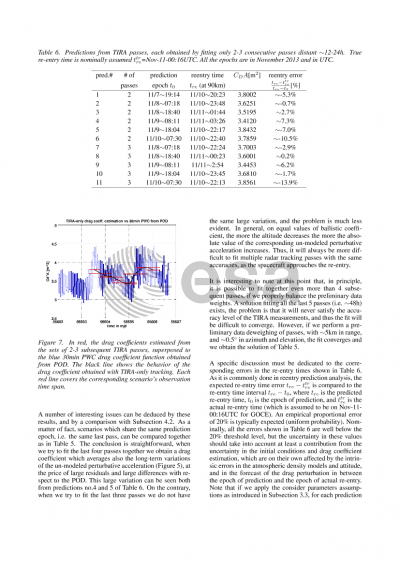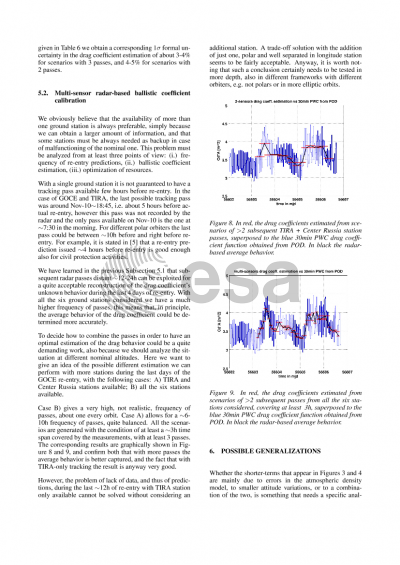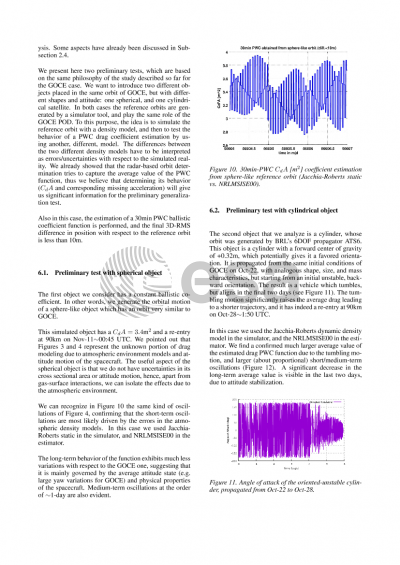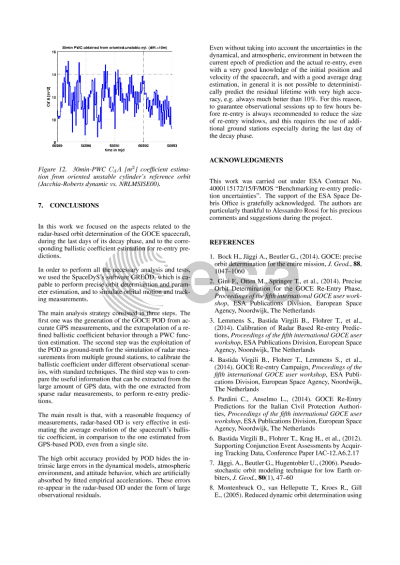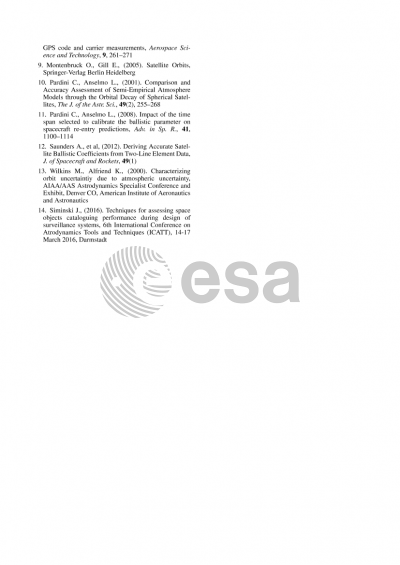Document details

Abstract
During its three weeks of uncontrolled re-entry phase, GOCE was tracked by several on-ground sensors and in-orbit instruments, mainly radar and GPS, and the acquired data was analysed by several teams. All the data were processed both directly and in Two-Line Element (TLE) format, to generate re-entry predictions. Due to the peculiar nature of the spacecraft, and of its attitude controller, the re-entry campaign proved to be quite unusual, with different attitude behaviours to consider. The large uncertainties in the physical limits of the controller dominated the final uncertainties in the re-entry predictions, leaving the Orbit Determination (OD) problems in the background. Dedicated works are present in the literature, focused on the TIRA sensor of the Fraunhofer institute for High Frequency Physics and Radar Techniques, and on GPS-based Precise Orbit Determination (POD). The conclusion was that, provided a proper observational strategy, the single site tracking gives comparable information to on-board GPS solutions, if the goal is re-entry predictions.
In order to better understand this counterintuitive result, SpaceDyS has developed a Software capable of performing GPS-based POD, radar-based OD and simulations of radar observations. Here we mainly focus on radar-based OD performances, aiming at assessing the dependency of the re-entry prediction uncertainties, and ballistic coefficient estimation, on the quality of the OD and of the observation features. We make only general considerations about the choice of a particular atmospheric density model, the predictability of space weather events, or independent techniques for attitude estimation.
First, we exploit the large amount of GPS and attitude measurements to compute a POD during the last weeks of GOCE re-entry. We use the TIRA measurements to compute standard OD and ballistic coefficient estimation for re-entry predictions. The POD can be used for orbit comparison and for accurate extrapolation of the ballistic coefficient evolution. The corresponding extrapolation made only with radar measurements is studied in depth, making also use of a radar-data simulator, which can generate artificial observations from further ground stations, using the POD as ground truth.
The main result is that, with a reasonable frequency of measurements, radar-based OD is very effective in estimating the average evolution of the spacecraft's ballistic coefficient, in comparison to the one estimated from POD, even from a single site. The high orbit accuracy provided by POD hides the intrinsic large errors in the dynamical models, atmospheric environment, and attitude behaviour, which are artificially absorbed by fitted empirical accelerations. These errors re-appear in the radar-based OD under the form of large observational residuals. Even with a very good knowledge of position and velocity of the spacecraft, and a good average drag determination, in general it is not possible to deterministically predict the re-entry location with very high accuracy (<10%). For this reason, guaranteeing observational sessions up to few hours before re-entry is always recommended to reduce the size of re-entry windows.
Finally, we attempt to generalize the results obtained for GOCE to similar simulated orbits for objects of different shapes (spherical or cylindrical).
This work was carried out under ESA Contract No. 4000115172/15/F/MOS "Benchmarking re-entry prediction uncertainties"
Preview
